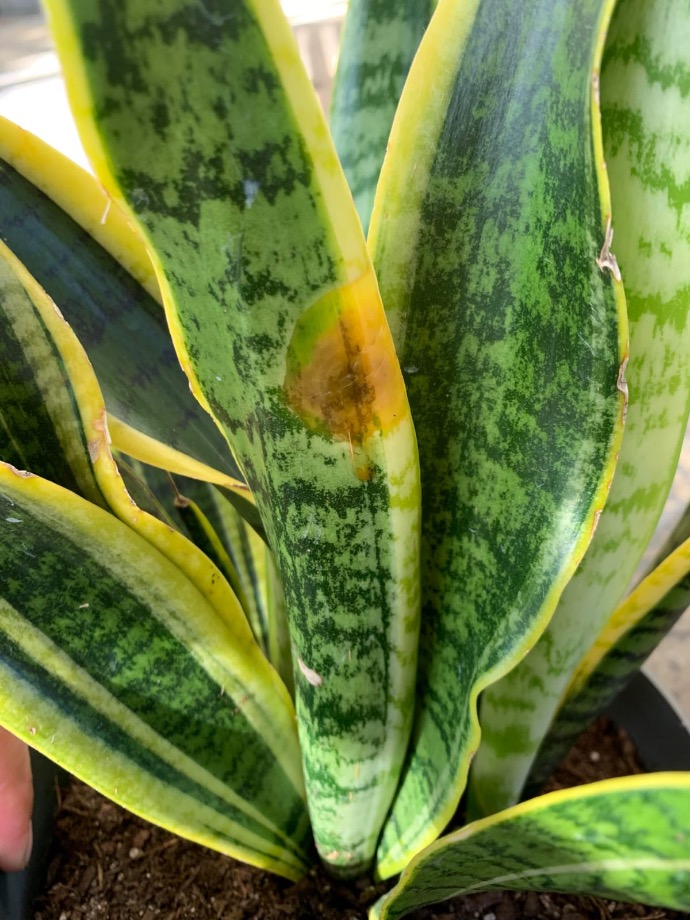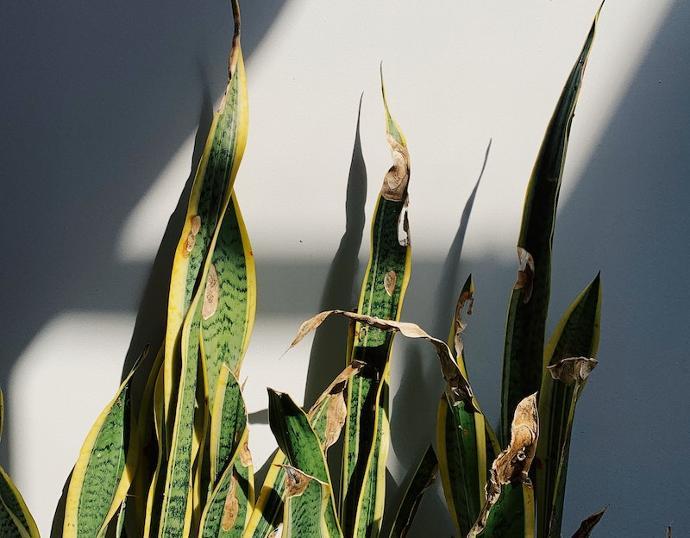Dracaena Snake Plant
Snake Plants, herbaceous perennials with slow growth, prefer well-drained soil and can tolerate low to bright indirect light. With low moisture needs, they are popular as indoor ornamental plants and are known for air-purifying qualities.
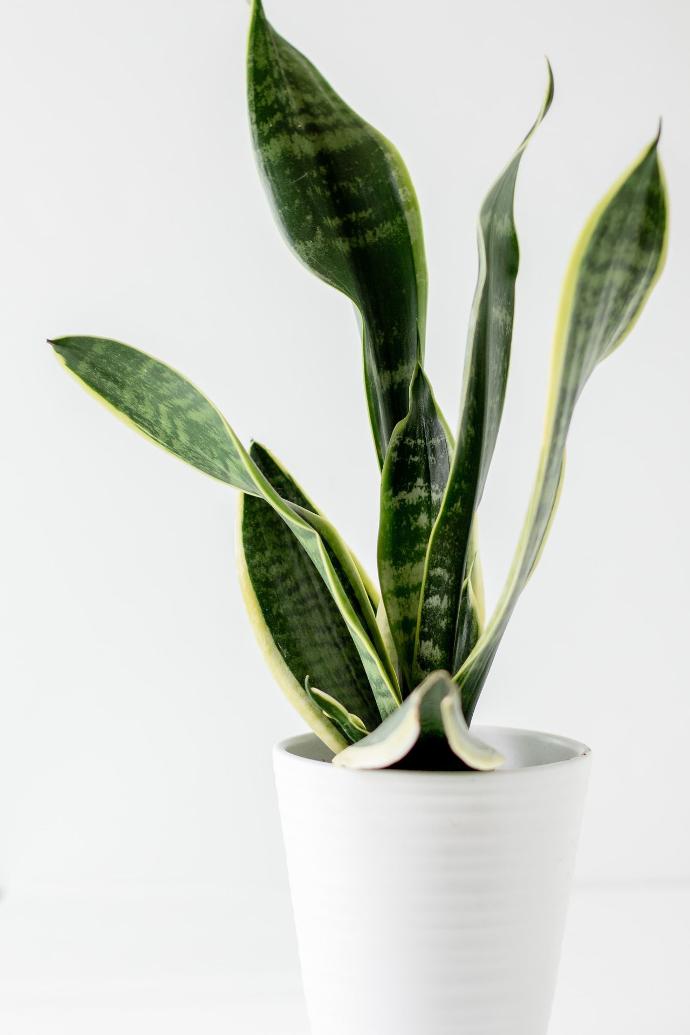
Habit
Herbaceous Perennial
Height
0.5-1 m
Growth
Slow
Soil
Well-drained, sandy
Shade
Low to Bright Indirect Light
Moisture
Low
Edible
No
Medicinal
Yes
Origin
West Africa
Climatic Condition
Tropical
Temperature (°)
15-30°C
Humidity (%)
40-60%
Potting media
Cactus mix
Fertilizers
Low NPK, minimal feeding
Watering
Light watering
Plant Weight
300-500 g
Flowering Time
Spring, Summer
Soil Ph level
6.0 - 7.0
Water Ph level
6.5 - 7.0
Soil EC
1-2 dS/m
Yield Per Plant
Ornamental, air-purifying
NPK ratio
10:10:10
life Span
Perennial
Health Benefits
Air purification, ornamental
Suggested Grow Media or Potting Mix ?
50% cactus mix, 25% perlite, 25% sand
Suggested Fertigation/Fertilizers
Fertilize every 4-6 weeks with a balanced, low-nitrogen fertilizer.
Common Diseases and Remedies
leaf spot , southern blight
Fungus that starts as white patches with black dots
application of neem oil
HEALTH BENEFITS
· Improves indoor air quality by filtering toxins like formaldehyde and benzene.
· Releases oxygen at night, aiding in better sleep.
What Is An Snake Plant ?
Dracaena trifasciata is a species of flowering plant in the family Asparagaceae, native to tropical West Africa from Nigeria east to the Congo. It is most commonly known as the snake plant, Saint George's sword, mother-in-law's tongue, and viper's bowstring hemp, among other names.
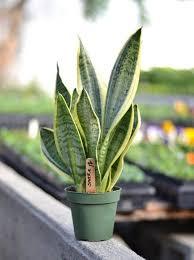
What Are The Different Types Of Snake Plants?
Sansevieria trifasciata (Mother-in-Law's Tongue): This is the most common variety of snake plant, characterized by its tall, upright leaves with green and yellow stripes. It's known for its durability and air-purifying qualities.
Sansevieria cylindrica (Cylindrical Snake Plant): Unlike the flat leaves of the trifasciata variety, cylindrica has round, cylindrical leaves that grow upright. It's also known as the African spear plant.
Sansevieria masoniana (Mason's Congo): This variety has large, paddle-shaped leaves with light green horizontal striping. It's also known as the whale fin or shark fin snake plant.
Sansevieria bacularis (African Spear): Similar in appearance to cylindrica, this variety has cylindrical leaves but with a more mottled pattern and shorter stature.
Sansevieria trifasciata 'Black Coral': This cultivar features dark green leaves with vertical light green stripes, giving it a striking appearance.
Sansevieria trifasciata 'Moonshine': Characterized by its silvery-green leaves, 'Moonshine' is a popular cultivar with a more contemporary look.
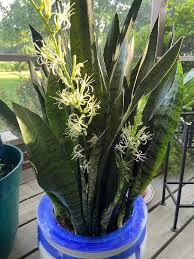
Location
Snake plants can do well in almost any light, from dimly lit rooms to full sun, but they grow more quickly in bright, indirect light. Keep them near a sunny window out of direct sunlight.
Sunshine
These tough plants thrive in any light level, from low to high. Typically they grow more quickly in brighter light, but strong direct sunlight burns leaves, especially when plants are outdoors. An ideal spot indoors is about 10 feet away from a west or south window.
Soil
Snake plants require a soil mix that allows excess water to flow through, preventing root rot. A recommended option is to use a succulent and cactus mix, which provides better aeration for the roots. Adding organic compost to the mix can help enrich the soil with nutrients.
Hydration
Growing snake plants in water requires good water quality. You can use rainwater, a pond, a well, or RO water. If you are using tap water, let it sit overnight. If the water becomes discolored, you should change it every 5-7 days.
Nourishment
A premium plant food such as Pennington UltraGreen All Purpose Plant Food 10-10-10 fed once each spring gives your snake plant the primary, secondary and micronutrients it needs. Then it keeps gently feeding for up to four months.
Issues
Snake plants require effective drainage to prevent issues like root rot and salt buildup. To improve your plant's drainage, you should: Choose a terracotta pot as these allow water to drain from the bottom, as well as absorb moisture and temperature changes.
Benifits of snake plant
In addition to being incredibly easy to grow, snake plants have a number of health benefits, including filtering indoor air, removing toxic pollutants, and boosting mental health. Many household plants are strategically placed for decoration and to maintain feng shui.
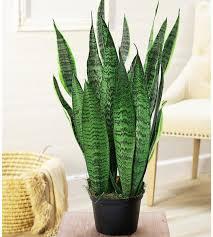
FAQs About Growing Areca Palms
Is it good to grow snake plant at home?
Snake plants (also known as sansevieria—their botanical name is Sansevieria trifasciata) can purify the air inside your home as its leaves absorb a variety of toxins, according to one study by NASA. They are also, according to Feng Shui teachings, the perfect plants to attract money, prosperity, and good energy.
What conditions do snake plants like to grow in?
These tough plants thrive in any light level, from low to high. Typically they grow more quickly in brighter light, but strong direct sunlight burns leaves, especially when plants are outdoors. An ideal spot indoors is about 10 feet away from a west or south window. Pay attention to pot tags when buying snake plants.
Is snake plant poisonous to touch?
Snake Plants are harmful to kids, children, toddlers, and babies if ingested. The sap inside the leaves can cause a rash if touched. Ingesting the plant in large amounts will cause gastrointestinal discomfort such as nausea, vomiting, and diarrhea.
Does snake plant produce oxygen 24 hours?
Snake plant is a solid 10 when it comes to providing oxygen 24*7. An aesthetic-looking and easy to care for, the Snake plant is also ideal to place in the bedroom since they ooze out oxygen 24 hours and grow well under low light conditions.
How long do snake plants live?
Most snake plants live up to 10 years, although some have been known to live as long as 25 years with proper care.
